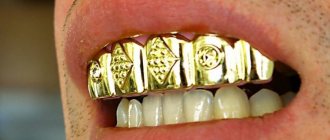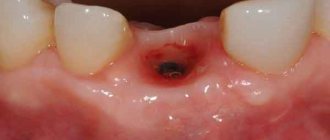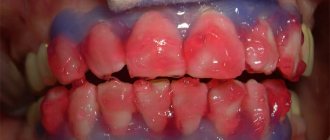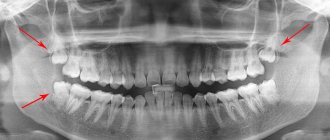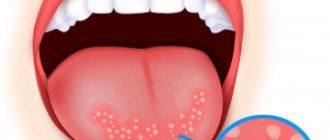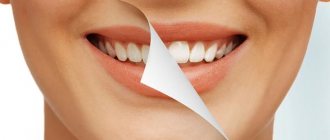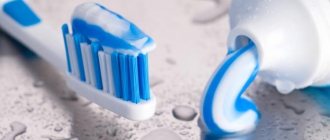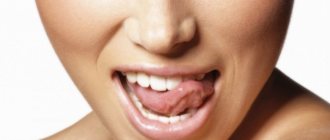Where does plaque come from?
When surfaces come into constant contact with liquids, limestone builds up. This is the name for specific contamination that occurs on any coating, but on the walls of the bathtub the likelihood of this is much higher, since the plumbing fixture is in use every day.
Plaque occurs due to the composition of the liquid. Excess calcium and magnesium salts have a greater effect on the formation of contaminants. The presence of iron causes the enamel to turn yellow.
Additionally, soap scum appears in the bathroom. This is the result of a combination of tap water and soap. Due to the presence of fatty components in the liquid that is washed off after taking a shower, dirt lingers in the bathroom faster. The plaque becomes denser and gradually turns into hard stone deposits. It is impossible to remove them with water.
Signs of limescale deposits on plastic and enamel in the bathroom:
- gray or yellow stains;
- contaminants cannot be removed with water;
- the surface becomes rough.
Causes
The reasons for the formation of dental plaque are different, depending on the type of plaque formed - soft or hard. The main and only reason for the formation of hard deposits is the presence of soft plaque, which forms on the teeth as a result of lack of proper oral hygiene. Areas that are cleaned daily with a toothbrush are not susceptible to hard buildup. In those places that are inaccessible to brush penetration, the process of mineralization of soft plaque deposits occurs with the gradual appearance of hard stones.
The formation of soft deposits on teeth occurs in every person, which is a constant and natural process due to the characteristics of the microflora of the oral cavity. The surface of the mucous membranes is the habitat and development of bacteria that remain in the mouth, despite thorough brushing of the teeth.
In normal condition, each tooth is covered with a structureless film - pellicles, containing proteins of various origins and other compounds. Being a semi-permeable membrane, the pellicle is considered a conductor for exchange between tooth enamel and saliva. As a result of microbial secretions, soft plaque with a porous structure is formed. The thickness of such plaque increases as dead epithelial cells, bacteria, and food debris are deposited on its surface. This can lead to gradual transformation into stone. In addition, there are additional factors that can cause the formation of hard plaque deposits:
You might be interested in: What is the incubation period for influenza? First symptoms in children and adults
How to remove limescale using folk remedies
For this purpose, improvised methods are used. At home there is always soda, vinegar or bleach, dishwashing detergent. 1 of these products will help remove limescale in the bathroom. Some pharmaceutical preparations also have a destructive effect on this kind of pollution.
The advantage of using improvised means is that they are low cost. The advantage of this method of care is the ease of cleaning surfaces. However, you must be careful when working with such substances, as you can ruin the bath.
Soda and vinegar
When these components are combined, a chemical reaction occurs resulting in the formation of carbon dioxide, salt and water. Baking soda and vinegar are effective when cleaning enamel bathtubs separately, but the effect of these substances is enhanced when mixed.
Instructions:
- The surface of the bath is rinsed with water.
- Processing is carried out with soda. As a result, a thick paste is formed. You can rub it over the surface using little effort, since the bathtub coating does not tolerate the effects of abrasives, even with small fractions in the composition. The soda slurry is left on the walls.
- After 2-3 hours, you need to sprinkle vinegar over a layer of soda. The amount of essence must be sufficient for a chemical reaction to begin over the entire area of the bath. If you skip some areas, the plaque in those places will not be removed.
- When the reaction of combining vinegar and soda is completed, the substance is rubbed over the walls of the bath. As a result, the softened limescale deposits are removed.
A more effective, but at the same time aggressive, remedy is based on a mixture of baking soda, soda ash, and vinegar. Prepare bulk components in equal quantities. A mixture of soda ash and baking soda is applied to the walls of the bath. All further steps are repeated as in the instructions above. Only vinegar is applied to the bath earlier - after 30-40 minutes.
Dishwashing liquid
This option is suitable only for cases where the plaque is weak, almost invisible on the enamel surface. Apply dishwashing detergent with a sponge to the pre-moistened walls of the plumbing fixture. There is no need to immediately wash off the substance for the gel to take effect; leave it on for half an hour. At the end of this period of time, you can clean the bathtub of plaque.
The detergent is washed off with water using a sponge. Considering that the gel has a weak effect on limescale contamination, it is recommended to increase the effectiveness of the method. To do this, the walls of the bath are pre-steamed.
Lemon acid
This is a universal method; it is even used to clean an acrylic bathtub (but in this case the limescale deposits are not removed immediately). Citric acid also restores plastic surfaces in the bathroom well.
First prepare a sufficient amount of powder. When purchasing, take into account the area of contaminated walls. To clean the entire bathtub you will need 3 packets of citric acid.
Instructions for use:
- Prepare a solution: 2 glasses of water, 1 packet of powder. The grains of citric acid should dissolve.
- The walls of the bath are treated with the substance.
- Without rinsing off, the solution is reapplied after 20 minutes. Each time you need to rub it additionally with a sponge.
- If stains remain, you need to repeat the procedure.
- Wash off the substance with cold water.
For cleaning an acrylic bathtub, additional recommendations are given:
- Before using the product, fill the bowl of the plumbing fixture with cold water - the level is determined taking into account the height of the appearance of plaque.
- Pour the contents of 1 packet into the bath.
- After 12 hours, you need to drain the water and rinse the walls of the plumbing fixture with water.
White
This is an aggressive method and should only be used if you need to remove limescale from an enameled cast iron bathtub. It is recommended to dilute the product with water. You can add other components to enhance the effect:
- Mix 1 tbsp. l. Whiteness, 2 tbsp. l. vinegar, add an arbitrary amount of washing powder. In this case, you need to get a mushy substance, so the powder is first diluted with a small amount of water.
- The product is applied to the contaminated areas with a spatula, but it is important to use a rubber tool, since the sharp edges of the metal will scratch the enamel.
- After 15 minutes, you need to treat the stains with a hard sponge.
Ammonia
Alcohol is mixed with water in a 1:1 ratio. This substance is used to treat limescale stains. Additionally, they are covered with napkins soaked in the solution. The duration of exposure to ammonia is from 30 to 60 minutes, which depends on the degree of complexity of the contamination. After some time, the stains are cleaned with a sponge. The remaining solution is washed off the walls of the bath with water. It must be remembered that ammonia emits a pungent odor, so processing should be carried out in a ventilated area.
Cleaning plumbing fixtures and pipes with vinegar
This method is more suitable for removing limescale stains from chrome surfaces. You need to mix vinegar essence with water in a 1:1 ratio. A rag or napkin is moistened in the solution and the contaminated area is covered. Surfaces are cleaned after 2-4 hours, and the condition of the plumbing must be checked. If chrome elements are dismantled, they should be immersed in the same product, but after half an hour they should be removed and then washed.
Hydrogen peroxide and soda
The components are taken in a ratio of 1:2 - less soda than peroxide, since it is necessary to obtain a viscous substance. Treat contaminated surfaces. This bath cleaner should be washed off 1 hour after application.
Traditional methods: pros and cons
The standard method for getting rid of limescale is acid - citric or acetic. It is not as harmful as aggressive agents, but has the same disadvantage: due to its high fluidity, it quickly rolls down from vertical walls. As a result, you will have to spend more time cleaning. In addition, the acid has a rather pungent and unpleasant odor, and it will not be easy to deal with in the confined space of the bathroom. To remove serious and long-standing stains with acid, you will need to spend a lot of time, or even leave the bathroom alone for several hours, during which time it will not be possible to use it. Yes, traditional methods are inexpensive and can help if used correctly, but they are quite inconvenient to use, and such cleaning wastes the most valuable resource - time.
Review of effective specialized products
If the plaque is old, home methods will not help get rid of it. You should purchase one of the special products, for example:
- LOC (Amway): the main component is citric acid, this product is highly effective in the fight against lime deposits, it can be used to clean different types of bathtubs;
- Cillit Bang: contains oxalic acid, acts aggressively, removes most contaminants, but should not be used to clean stone, brass, copper and galvanized products;
- Ecover: contains citric acid, the substance can be applied to any type of plumbing fixtures; after removal, stains do not remain on dark tiles;
- Acrylan: suitable for processing ceramics, enamel and acrylic bathtubs, as well as chrome surfaces;
- Comet bath spray: contains organic and inorganic acids, not suitable for enamel baths or stone surfaces.
What substances can harm the surface?
Restrictions when using some products:
- acids are not applied to chrome-plated elements of plumbing fixtures and faucets; such surfaces cannot be cleaned using abrasive substances;
- inorganic acids are prohibited from being used to treat acrylic baths;
- oxalic acid should be used to remove lime deposits from cast iron and enameled surfaces as rarely as possible;
- Be careful with chlorine-containing products.
Wire brushes and other hard tools should not be used to clean plumbing fixtures.
Vinegar - a remedy for stubborn stains
To dissolve more serious lime deposits on ceramic and glass items, chrome taps and pipes, 9% table vinegar is useful. It must be spread over the surface and left for 15-30 minutes.
To remove old limescale, vinegar must be in contact with it for at least an hour. Then you need to wipe the treated area with a dampened cloth or use a melamine sponge for better effect.
A brush is ideal for cleaning the toilet. To treat the shower head from plaque, you can tie a bag filled with vinegar to it. Next, rinse the surfaces with warm water and wipe dry.
Prevention measures
Plaque forms when water dries out. You can fight it by wiping the walls of the bathtub dry every time after a shower. However, this is a labor-intensive process, and there is not always time to complete it. It is better to choose effective chemicals and periodically clean the bathtub before a permanent deposit forms. For prevention, the bathtub is treated with a glass cleaner, since it contains a small amount of ammonia. After treatment, you must wait 20 minutes, then rinse off the substance.
You don't need to use glass cleaner every day to prevent stains. It is enough to clean once every 3-5 days or once a week if the water contains fewer aggressive components and dirt slowly lingers on the walls of the bathtub.


